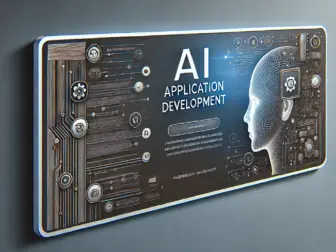Tag - AI development guide
AI Development Guide: A Comprehensive Resource for Building Artificial Intelligence Solutions
Artificial Intelligence (AI) has become a critical component of many modern applications and technologies, from virtual assistants like Siri and Alexa to self-driving cars and automated customer service systems. As the demand for AI solutions continues to grow, more developers are looking to expand their skills and knowledge in this rapidly evolving field.
Whether you are new to AI development or looking to enhance your existing skills, this guide is designed to provide you with a comprehensive resource to help you build AI solutions effectively. From understanding the basics of AI to implementing advanced algorithms, this guide will walk you through the key concepts and tools you need to succeed in AI development.
Understanding the Basics of AI
Before diving into AI development, it is essential to have a solid understanding of the basics of artificial intelligence. This includes learning about machine learning, deep learning, neural networks, and other fundamental concepts that form the backbone of AI technologies. By grasping these concepts, you will be better equipped to develop AI solutions that meet the specific needs of your projects.
Choosing the Right Tools and Technologies
One of the key considerations in AI development is selecting the right tools and technologies to build your solutions. There are many programming languages, frameworks, and libraries available for AI development, each with its strengths and weaknesses. By exploring different options and understanding their capabilities, you can make informed decisions that will optimize your AI development process.
Building and Training AI Models
Once you have a foundational understanding of AI concepts and have chosen the right tools, the next step is to start building and training AI models. This involves collecting and preparing data, designing the architecture of your AI model, and training it using machine learning algorithms. Through iterative testing and refinement, you can fine-tune your AI model to achieve optimal performance and accuracy.
Deploying and Scaling AI Solutions
After successfully building and training your AI model, the final step is to deploy it into production and scale it to meet the demands of your applications. This includes integrating your AI solution with existing systems, monitoring its performance, and optimizing its efficiency over time. By following best practices in deployment and scaling, you can ensure that your AI solutions deliver value to users and stakeholders.
Overall, AI development is a dynamic and exciting field that offers endless possibilities for innovation and growth. By following this comprehensive guide and continuously expanding your skills and knowledge, you can stay ahead of the curve in AI development and build cutting-edge solutions that drive real-world impact.
